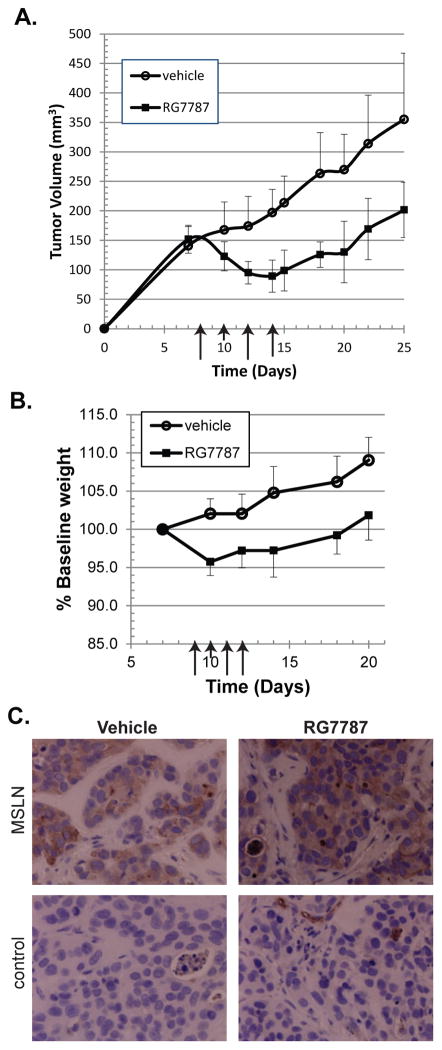Figure 2.
Effect of RG7787 on TNBC mouse xenograft tumor model. (A) Female athymic nude mice were innoculated in the intramammary fat pad with HCC70 cells at time 0. Intravenous treatment with RG7787 (2.5 mg/kg) or vehicle was begun on day 8 and continued every other day for a total of four doses. Each data point represents average of mean tumor volume for n = 7 animals treated with RG7787 or vehicle. Arrows indicate the days that treatment was administered. There is a statistically significant difference between the two groups beginning at day 10, with p < 0.0001 by day 14. Results shown are representative of three similar experiments. (B) Change in baseline weight for mice treated with the regimen described above is plotted over time. Weight dropped less than 5% in RG7787-treated animals over the course of therapy. (C) MSLN expression in tumors excised from vehicle and RG7787 treated mice was examined by IHC in formalin-fixed paraffin embedded tissue. Prominent staining was observed with anti-MSLN antibody (above) but not in control specimens labeled with isotype control antibody (below). Photographs were taken at 40X magnification.

